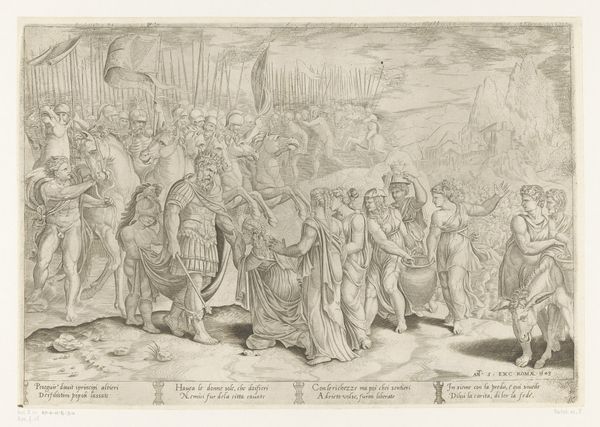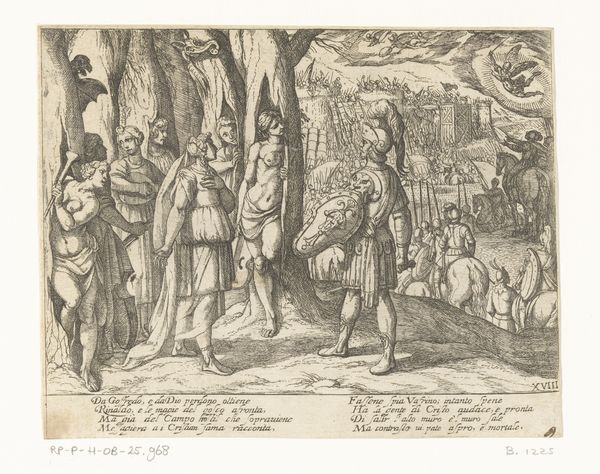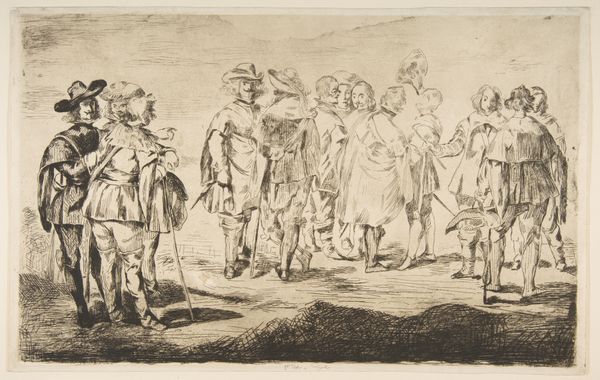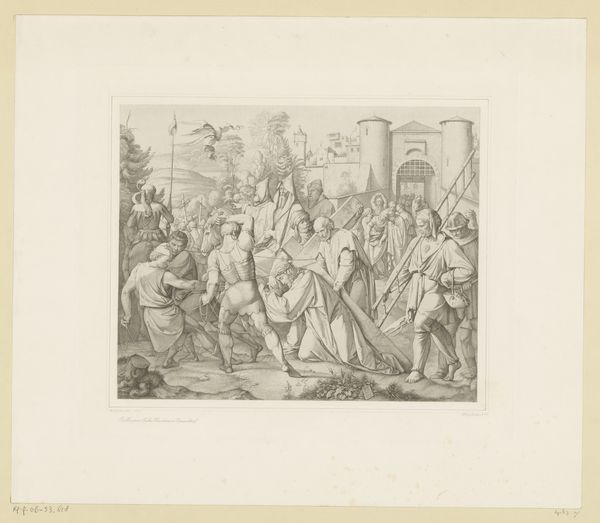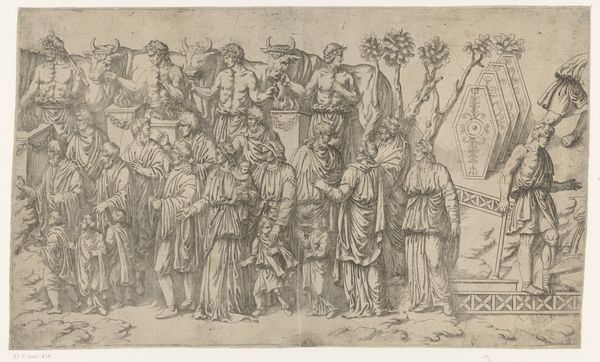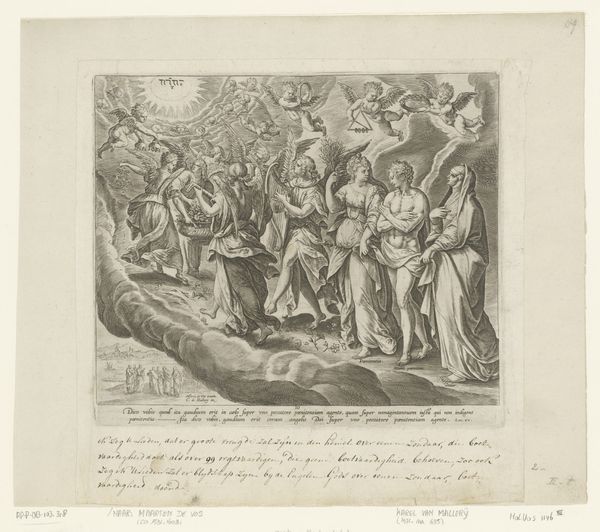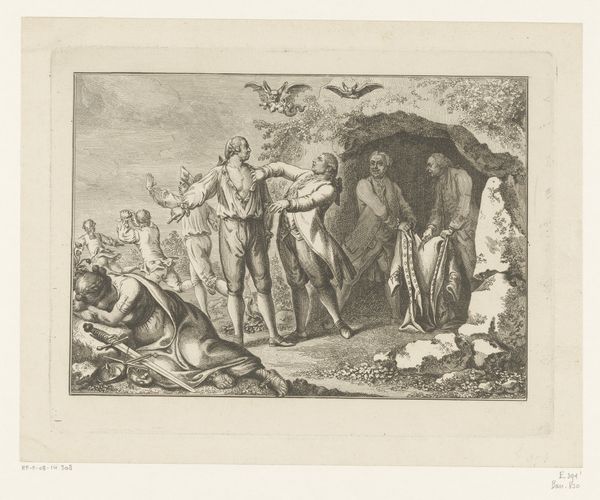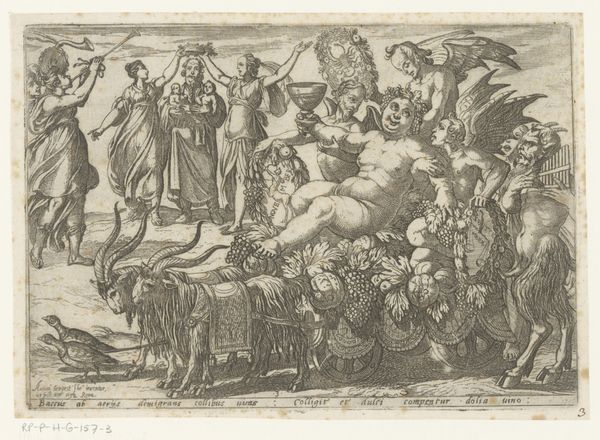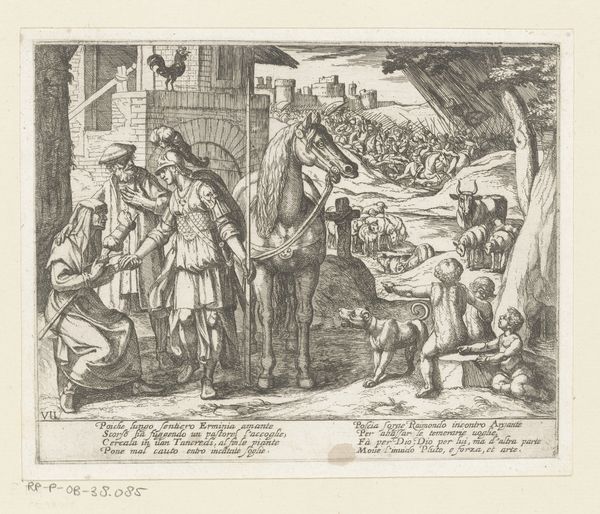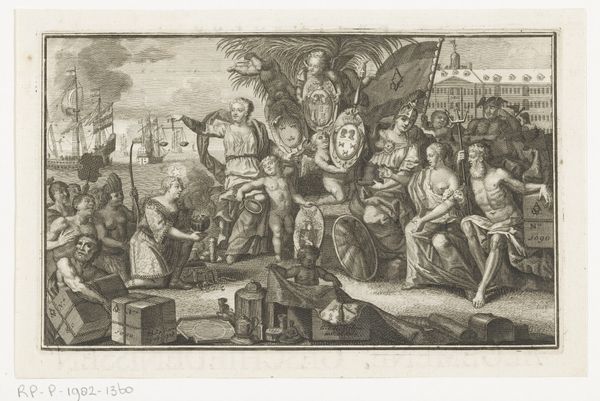
print, engraving
#
narrative-art
# print
#
figuration
#
11_renaissance
#
history-painting
#
italian-renaissance
#
engraving
Dimensions: height 300 mm, width 438 mm
Copyright: Rijks Museum: Open Domain
Curator: "Abigail Asks David for Forgiveness," a 1543 engraving. The way the artist captures the light and shadow with just lines is stunning. What do you see in this piece? Editor: The overall composition seems carefully structured. Notice the arrangement of figures and their gestures. The linear perspective creates depth. How do you read the relationships between these formal elements? Curator: Indeed. Let's focus on the balance within the frame. The artist divides the pictorial space using groupings of figures. How does this division affect the overall impact of the scene? Consider also the texture achieved through the intricate network of lines. What effect does this have? Editor: The texture does give it some realism. So, are you saying that the relationship between these formal elements defines its impact, that the historical content is second to composition? Curator: The balance and rhythm guide our eye and influence our emotional response, irrespective of the historical narrative. Note the repetition of shapes. How do these formal echoes contribute to a sense of unity and harmony within the composition? Editor: I hadn't really thought about it that way. Focusing on composition gives it another layer of depth. Curator: And that depth invites you to move beyond subject matter and into structure. Form allows narrative, and vice-versa.
Comments
No comments
Be the first to comment and join the conversation on the ultimate creative platform.
